Archizoom, a Story of Rebellion, Shapes, and Provocations

Table of Contents

Being Unconventional
The non-stop-city project, against every rule, what’s fashion, the concept of space, more designs signed archizoom.
“Instead of scientific progress, born from the intelligence that explains it all and from the elegance that saves all, we prefer a paper and bright horizon, with a rainbow above. We also would like to say that we aren’t where they are looking and don’t trust how we greet you. Then there is this scent of dead roses, that we don’t like much..” – Archizoom.
In the 1960s, Italian architects Andrea Branzi, Gilberto Corretti, Paolo Deganello, and Massimo Morozzi smelled the dead roses, a scent that no one else could smell. In an era of positivity, economic boom, and family, the four artists of the Archizoom studio felt differently. With World War II over, Italy was experiencing a new Renaissance. The 60s and 70s were the years of the “Dolce Vita.” And of the Superonda and Safari sofas.
Empty Rooms and Free-style
The four architects formed their studio in Florence in 1966. The same year, they also inaugurated their Superarchitecture exhibit, and that’s how the group announced its debut in the world of design. The term “Super” might create a misunderstanding. “Super” might remind viewers of skyscrapers or the new Italy, a country filled with cars and Vespa bikes.
But, to Archizoom, “Super” meant something different. The decades of the 60s and 70s were the decades of super-production and consumption. These were the years of the supermarket with way too many options of tomato sauces and cheap packets of spaghetti. After the scarcity and poverty of the war and the aftermath, Italians wanted it all.
“Superarchitecture is the architecture of the superman,” read the poster of the exhibition. This wasn’t the superhero who saved the world, just the opposite. The designers of Archizoom saw ordinary men who believed anything was possible, especially the pursuit and reach of happiness. But this radical avant-garde movement didn’t believe in any of it. That’s why most art and design critics of the era defined the work of Archizoom as a “panic.”

The design and architecture of the 60s and 70s centered on one philosophy: functionality. Terraced houses, sofas, and armchairs were supposed to be practical and comfortable. Forget about imagination or creativity. Everything had to be functional, watch TV in comfort, or enjoy a coffee cup on the terrace. Until the four architects of Archizoom threw functionality out of the window with pieces like the Safari and the Superonda Sofa.
They also threw society’s ideas of happiness in the trash. The TV, radio, and even the media told Italians that happiness was within their reach. All they had to do was work hard and create a family. Then, retirement would reward them for their hardships. Needless to say, Andrea, Gilberto, Paolo, and Massimo didn’t believe in it. While they didn’t define their work as “revolutionary,” they wanted to make people and viewers think.
Stop focusing on the outside, Archizoom said, and look inside. How? With empty rooms and with the Superonda Sofa.

Archizoom launched this project between 1969-1971, and it included both the Superonda Sofa and the Safari Sofa. It’s figurative architecture, meaning it doesn’t solve problems (aka functionality), but it provokes the viewer. The principle behind Non-Stop-City is that, in the future, citizens won’t need a centralized and modern city like Milan was becoming. Why? Because technology will create a new metropolis that is revolutionary and it doesn’t follow any rules.
Traditional urban landscapes created interrupted patterns with tons of empty spaces. The new city is a continuous structure with no emptiness and in which everything was repurposed, like elevators that could become social spaces, a city without architecture.
“The No Stop City guarantees you will have the car outside your home, and it guarantees maximum demographic concentration,” said architect Andrea Branzi. This new metropolis will have parks with free-form organic shapes, like the ones of the Superonda Sofa.
The Unconventional Sofas by Archizoom
These two designs belonged to the 1969 project, and they quickly became popular. They are:
● Superonda Sofa ● Safari Sofa
The Superonda is designed as a free-style sitting space without any backrests or armrests. It’s a modular sofa with pieces that combine and match like a puzzle. However, this is a sofa without a body. Instead, it’s one big and colorful wave. It’s one block of polyurethane divided by an S-shaped cut. Thanks to its modularity, the Superonda Sofa can become a bed or chaise longue. It’s pop before pop culture was even a thing. Shiny (thanks to its sky coating) and in the colors of red, black, and white, this Archizoom sofa challenges conventional society.
Produced between 1968 and 1974, the Safari Sofa was advertised as “an imperial piece in the squalor of your domestic walls. A beautiful piece that you don’t deserve.” Provocative, indeed. Giant and with a fiberglass structure, the Safari Sofa features a seat in foam rubber covered with plush. Two superimposed solid pieces form this piece, and one is circular while the second is like a wave. Archizoom’s piece reminds the viewer of an African safari with two palms in the corners and a carpet in fake leopard leather. Kitsch and ironic, this sofa broke every design rule.

Both the Superonda Sofa and the Safari Sofa challenged the functional designs of the 60s and 70s. In fact, the architecture and furniture of these decades focused on gathering the masses. The new masses had money, and each house had a TV. People were ready to spend, and they started thinking about the future. Hence, geometric shapes and plastic are everywhere. Living rooms all over the world looked alike with household appliances and crowded open shelves. Consumer society didn’t have any space for creativity.
On the other hand, Archizoom studio has space for imagination. The four architects established themselves as the anti-design movement, creating panic in the field. This movement focused on warm, colorful, and soft shapes and forms. Also, modularity was an important characteristic. Forget impersonal industriality. It was time to find strength in the differences. Every design created by Archizoom promoted variety.

The Italian furniture brand Poltronova produced the Superonda sofa and the Safari sofa.
Founded in 1956 by Sergio Camilli in Tuscany, this design company shows Italy’s hope after World War II. Poltronova was born with the idea of innovative modern furniture, bringing something new and different to the public. Joining designer Ettore Sottsass , Camilli and his company wanted to experiment with the boundaries of art and comfort. During the first years of the business, Poltronova focused on elegant and modern furniture, often using wood as the primary material. Warm and never outdated, wood can never go out of fashion.
Just like innovative design doesn’t go out of fashion. That’s why the Italian company always collaborated with the brightest and most alternative minds in this world, partnering with names like Mario Ceroli, and De Pas D’Urbino, and Lomazzi. Through the years, it became a safe space for creative people. Decades ago, the company had readings, movie showings (especially appreciating Andy Warhol), and poetry readings.
In the 60s, Poltronova and its team of designers embodied the diverse soul of Italian design, with all its contradictions and opposite tendencies. It did this with the certainty that this complexity hid wealth. The complexity could unite people, and its vitality could create an extraordinary phenomenon. It’s the phenomenon of pushing people to the limit and of making them rethink their certainties. After all, in life and design, there are no certainties. Everything can change at any time.
The Archizoom Designs, not Only Sofas
The four Italian designers didn’t break the rules only with sofas. While the Safari and Superonda Sofa are the most famous pieces, Archizoom studio produced armchairs, clothes, and inspiration worldwide.
The exhibition “Design Dressing” dates to 1973. Indeed, clothes for the designers. “We haven’t looked for a new line or clothes of the future, but rather for a different way of using clothes,” Archizoom announced. Every item has two fundamental pieces: a colored elastic costume and a loose suit. Mass production in the clothing industry had issues of organization and, once again, creativity. The “Design Dressing” exhibit focused on Arab standards and culture, but it created an independent outfit that could serve everyone.
Archizoom had a conflictual relationship with fashion. As the architects themselves stated, “getting dressed is easy because elegance is dead.” Fashion had rigid rules, both of gender and colors. Pink is for girls, right? And so are skirts. Well, the Italian designers disagreed – not a surprise anymore. Fashion could and should be free, especially free from sexual connotations and gender. This way, clothes become a means of communication, and the person decides what to communicate. Not the fashion designer.
And it all begins with one revolutionary piece of cloth. In the consumer society, everyone started looking the same. Archizoom studio wanted to inspire people to be themselves, outside of any rules, with its experiments and creativity. So, clothes are not functional but inspiring.
Archizoom challenged the conventions, even the idea of space itself and not only with the Superonda Sofa.

The consumer society liked owning things. Houses were filled with objects, and most of them were useless. Nowadays, we call it “materialism.” Space has to be filled. Not according to the Italian designers. Space is something negative, a reality that we aren’t living. So, it’s time to change it and even substitute it.
Perhaps with the AEO lounge chair, an armchair with Durethan base, painted steel structure, and fabric upholstery. People could add tables to it, changing the configuration of the lounge chair. Then, the studio launched the empty gazebos and rooms as the opposite of functionality. While these design pieces were meant to be empty, people could have filled them with Archizoom’s collections, like the “Rosa Imperiale” or the “Grandi Viaggi.”
The former literally means “Imperial Rose,” while the latter means “Great Journeys.” These collections featured mother-of-pearl coating, modular carpets, and stamped sheet metal. Or the “Letti di Sogno,” beds of dreams of the Rosa Imperiale collection. Their style is redundant and kitsch, like the Safari Sofa. Different symbols juxtapose and even pop elements. These beds are designed to be aggressive, and they oppose the surrounding space. Perfect with the rainbow lamp, also part of the series.
The Italian furniture brand Cassina has been the producer of the AEO lounge chair. This piece has been featured in its collection through the years alongside the works and creations of Afra and Tobia Scarpa , Mario Bellini , Vico Magistretti , and Gio Ponti . Because great minds think alike, still, the imagination of Archizoom went beyond these pieces.

For example, the Mies chair, one of the group’s first creations in 1969. Made of chrome-plated steel, rubber, hide cushions, light bulb, and cable with plug, this chair looks like it should be by the swimming pool. However, it seems like a chaise lounge, but it’s not as comfortable as one. This is rigid yet functional. The rubber yields to the person’s weight, and it also features a footrest and headrest.

The bedrooms of the Italian studio featured fake marble nightstands, “front armchair for taking off your socks,” and portraits of Bob Dylan. Kitsch, unconventional, and not at all functional, every piece signed by Archizoom challenged the 60s and 70s.

“We want to introduce you to anything that’s left behind: the built banality, the international vulgarity, urban designs, and biting dogs,” stated the representatives of Archizoom studio. They reached their intent, undoubtedly. And they kept pushing the boundaries of architecture and beliefs until 1974 when the group took different paths. Still, they always smelled the dead roses, and they tried to do anything in their power to revive them.

Do you want to buy or sell Archizoom furniture? Contact us!
More about archizoom, the superonda sofa by archizoom: rebellion in architecture, the safari sofa, imperial and rebellious, more design classics, the locus solus series: a contemporary artistic masterpiece by gae aulenti, the ghost armchair: a masterpiece of italian innovation, the delfi table, when marble is king, gianfranco frattini for bernini, creating timeless pieces , the 849 armchair, linear and creative, the eames lounge chair, the innovation of plywood, the carlotta armchair, design for the youth, the nastro armchair: a blend of tradition and innovation, the dialogo chair, a conversation with 70s design, the arco lamp, the versatility of industrial design, iconic designers, gaetano pesce: a master of design and architecture, ludwig mies van der rohe, made of skin and bones, frank lloyd wright, the master of prairie houses, carlo scarpa, when design comes from creativity, vico magistretti, the simplicity of reconstruction, le corbusier, the architect of purism, marcel breuer, bauhaus architect and designer, gio ponti: an architect of innovative italian designs, ettore sottsass, research and experimentation, ignazio gardella: an iconic designer and architect, shop archizoom furniture.

Massimo Morozzi “Tangram” Modular Table for Cassina, 1983
Italian Design Club - +39 3274940084 - WhatsApp - Contact Us - ©2024
Italian Design Club - +39 3274940084 WhatsApp - Contact Us - ©2024
Shipping quote request
Oh! Looks like your location is not in our Shipping Matrix. But don’t worry! We ship worldwide! We’ll calculate the shipping price as soon as getting your request.
Shipping to:
Zip/Postal Code
Safari Sofas by Archizoom Associati for Poltronova, 1968, Set of 2
Get in Touch
Make An Offer
We noticed you are new to Pamono!
Please accept the Terms & Conditions and Privacy Policy
Offers are binding. You will be asked to enter credit card information in a next step. If the seller accepts your offer an order will be placed and your card charged. For more details on how offers work click here .
Trade price online This product already has a trade price. To access it, please apply to our Trade Program by clicking below. Approval process may take 48 hours.
Do you want to sell a personal item?
If you wish to sell a personal item to our network of professional vendors, please fill out this form
Almost There!
Thanks for your inquiry, someone from our team will be in touch shortly
If you are a Design Professional, please apply here to get the benefits of the Pamono Trade Program
About This Piece
Vintage Design
Click here for full description Close description
Shipping & Delivery
*Important Note
Please examine every order upon delivery. In the event that there are visible signs of damage or missing or incorrect pieces, please indicate the problem on the Delivery Note and contact us within 48 hours of delivery. A signed delivery receipt without notations of missing, damaged, or incorrect item(s) represents your acceptance of the complete order in perfect condition.
About the Creator

Italian radical design collective Archizoom Associati was founded in Florence in 1966. Adopting an attitude of design vigilantism, their work critiqued modernism and its inherent propensity to promote consumerist, style-driven societies.
Archizoom’s founding members— Andrea Branzi (b. 1938), Gilberto Corretti (b. 1941), Paolo Deganello (b. 1940), and Massimo Morozzi (1941-2014), with designers Dario and Lucia Bartolini joining in 1968—met while studying at the Faculty of Architecture at the University of Florence; these years in Italy (and beyond) were marked by an economic downturn, housing shortages, and governmental fumbling.
According to legend, the young architects of Florence were stirred to action by the course Spazio di coinvolgimento (Space of Involvement), taught by Leonardo Savioli, which criticized the psychological, social, and spiritual alienation endemic in the design of modern cities. Other radical, anti-design groups were spawned from Savioli’s class as well, including 9999, Superstudio, UFO, and Zziggurat. And all of these Italian groups also found inspiration in the work of neofuturist British architectural collective Archigram, as well as international representations of Pop Art.
Archizoom initially came to prominence through a pair of anti-consumerist exhibitions entitled Superarchitettura , organized in collaboration with Superstudio , first in Pistoia in 1966 and again in Modena in 1967. The following year, Archizoom participated the iconoclastic exhibition Centro di Cospirazione Eclettica at Milan’s Triennale and designed a series of theoretically driven gazebos that were published in Ettore Sottsass’s Pianeta Fresco magazine.
Archizoom’s most enduring and influential contribution to the anti-design movement was their 1969 No Stop City , an ironic urban plan for an artificially lit, air-conditioned, infinite city that takes modernist ideology to its logical extreme.
Archizoom was also invited to participate in the landmark 1972 Italy: The New Domestic Landscape at New York’s Museum of Modern Art. For this era-defining exhibition, the Archizoom installed Gray Room —a featureless environment animated only by a woman’s voice describing a beautiful, colorful house—alongside the work of other Italian visionaries like 9999, Gae Aulenti , Mario Bellini , Joe Colombo , Gruppo Strum, Ugo La Pietra, Gaetano Pesce , Alberto Rosselli, Ettore Sottsass , and Marco Zanuso with Richard Sapper .
Before they disbanded in 1974, and the individual members went on to pursue separate careers, Archizoom designed a range of iconic pieces for Poltronova : Superonda Sofa (1966), Safari Sofa (1966-7), Dream Bed (1967), and Mies Armchair (1969).
* Images courtesy of Centro Studi Poltronova , Graham Foundation , and Frac Centre
Only one set available
Free Shipping from Belgium to:
Please enter a valid Zip Code
Unfortunately we can't currently ship this product to your selected destination.
Shipping quote to this location is not determined.
Sustainable Choice
Choosing vintage and antique furniture reduces your carbon footprint by cutting down on waste and reduces demand for new materials and extends the life of the products we use.
You May Also Like
Sponsored Products
Mid-Century Danish Teak Sofa by Svend Åge Eriksen for Glostrup
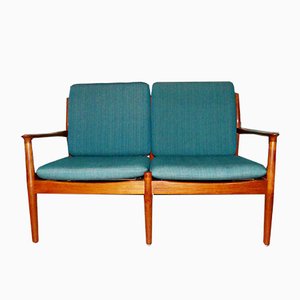
Mid-Century German Modern Three-Seater Sofa in Teak and Boucle White by Eugen Schmidt for Soloform, 1960s
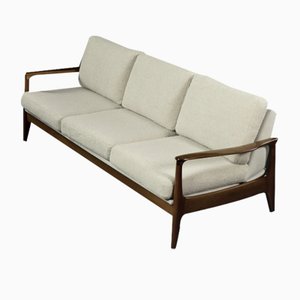
Bauhaus Sofa by Robert Slezak for Slezak Factories, 1930s

Oak and Wool Ml90 3-Seater Sofa by Illum Wikkelsoe for Mikael Laursen, 1960s
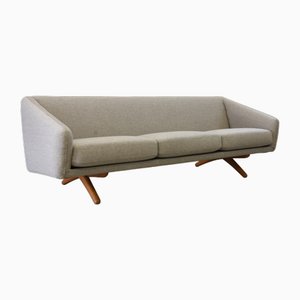
Midcentury Modern Italian Leather Three-Seater Sofa, 1970s

3-Seater Wooden Sofa, 1950s
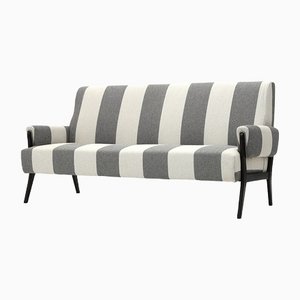
Danish Sofa by Arne Wahl Iversen, 1970s

Mid-Century Italian Modern Modular Seat Group, 1970s, Set of 10
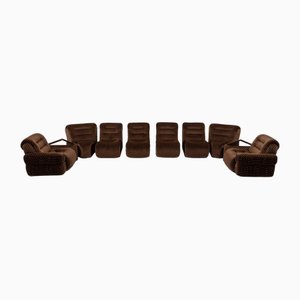
German Biedermeier Sofa, 1830

Mid-Century Danish Corner Sofa, 1950s
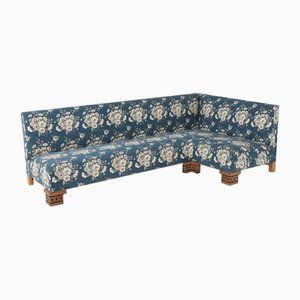
2-Seater Sofa in Ivory Leather from Rolf Benz, Germany, 1980s
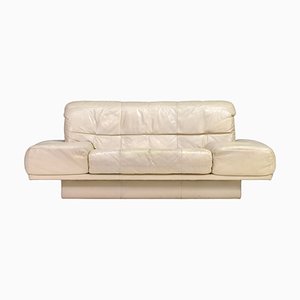
First Series D70 Sofa by Osvaldo Borsani for Tecno, 1954
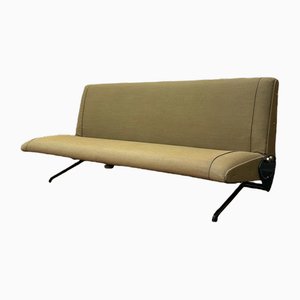
Mid-Century Scandinavian Rosewood and Leather Sofa, 1960s

Postmodernist Prototype Sofa from Strässle, 1986

Chesterfield Victorian Burgundy Leather Sofa
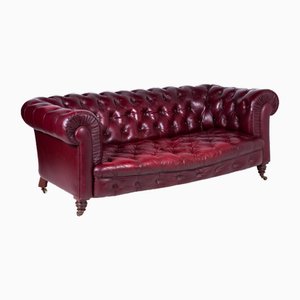
Vintage Model 3321 Swan Sofa by Arne Jacobsen for Fritz Hansen, 1960s
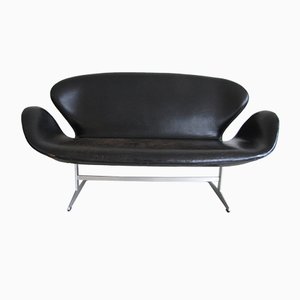
Dutch Sofa in Metal & Fabric, 1950s
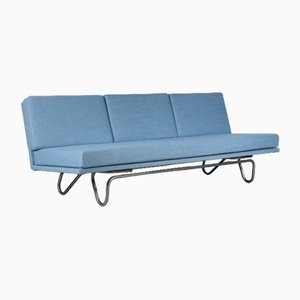
Bauhaus Beige Tubular Steel Sofa by Robert Slezak, 1930s

Mid-Century 3-Seater Sofa by Gustav Thams for a/S Vejen, Denmark, 1960s

Mid-Century Danish Sofa in Rosewood, 1960s

More from this Dealer
Table Lamps in Black Resin Inlay Marcassite attributed to Stan Usel, 2010s, Set of 2
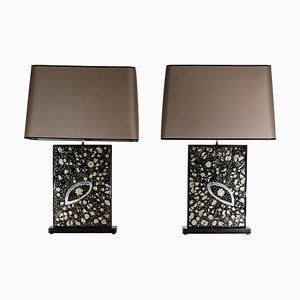
Coffee Table with Inlaid Petrified Wood by Philippe Barbier

Armchairs by Pierre Chareau, Set of 2
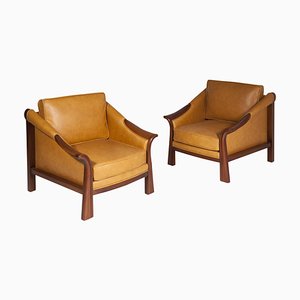
Alberello Floor Lamp by Stilnovo, 1960s
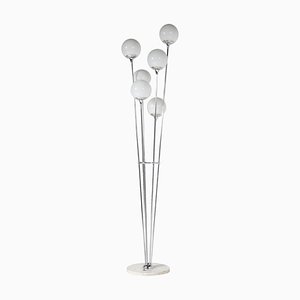
Etched Brass Coffee Table by Jenatzi, 1970s

Coffee Table in Etched Brass with Inlay in Ammonite by Georges Mathias
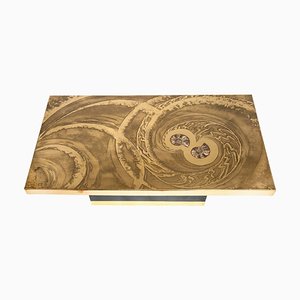
Red Goatskin Dry Bar or Cabinet by Aldo Tura
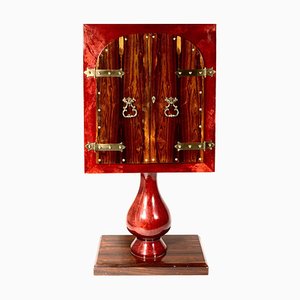
Etched Brass Coffee Table by Christian Krekels, 1970s
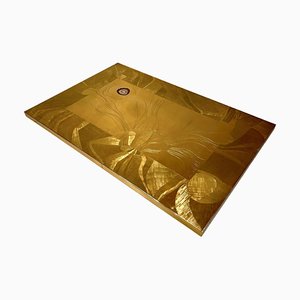
Coffee Table in Sculptural Bronze attributed to Willy Daro, 1970s

Lamp with Brass Circle and Agate by Willy Daro
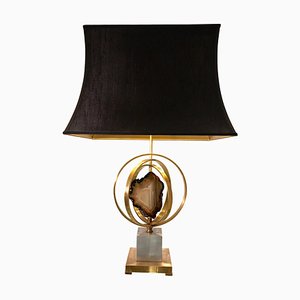
Floor Lamp Attributed to Stilnovo, 1950s

Table Lamps Lotus attributed to Maison Charles, 1970, Set of 2
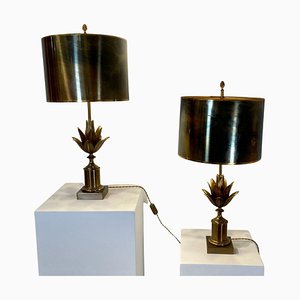
Table Lamps by Maria Pergay, 1970s, Set of 2
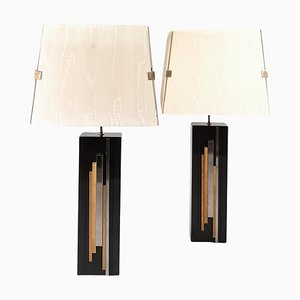
Fireplace in Ceramic & Iron by Sue Et Mare, 1920

Bird Figurine by Alessandro Pianon for Vistosi, 1960s
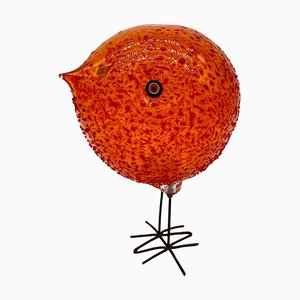
Table Lamps in Sculptural Brass and Amethyst attributed to Willy Daro, 1970s, Set of 2
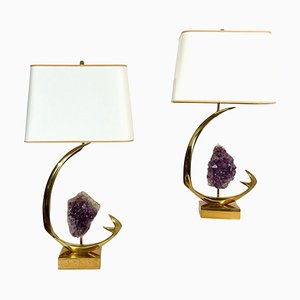
Etched Inlaid Brass Coffee Table with Agate Stone Top by Christian Krekels, 1977
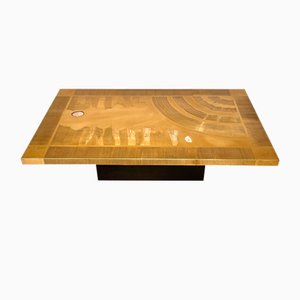
Coffee Table by Mathieu Matégot
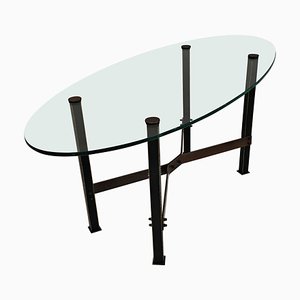
Veranda Lounge Chair by Vico Magistretti for Cassina
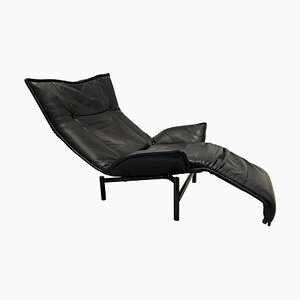
Coffee Table in Tiger Eyes attributed to Jean Claude Dresse, 1970s
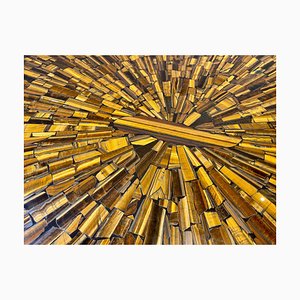
Related Stories
Spring Fling
Fresh trends that #SparkJoy

Cocktail Hour
Bar carts are back, and they've brought rituals of relaxation along for the ride

Flights of Fancy
Pioneering German lighting designer Ingo Maurer unveils new commission in Munich

Long Live Memphis
Eight contemporary designs that echo the color and joy of Sottsass's postmodern movement

A Closer Look
For Carmen Tonen of Antwerp’s Akanthos Eclectic Interiors, vintage collecting is all in the details

Best Kept Secrets
5 undervalued midcentury Scandinavian designers you should know, from the experts at Furnip

7 iconic industrial designs just added to the Pamono shop

Swedish Rarities
Gustav Svartvik of 1st Modern recommends 9 collection-worthy 20th-century designs from Sweden

Mid-Mod at Work
A look at the best vintage desks and variations on the midcentury modernist style

Born This Way
Stam, Saarinen, Colombo, and Mendini—trailblazing Leos of design history

Be True to Yourself
The sui generis ethos of interior designer Frank Stüve

More Products
- All Standard Sofas
- Vintage Standard Sofas
- Archizoom Couches & Sofas
- Contemporary Standard Sofas
- White Standard Sofas
.jpg?w=1)
"Safari" seating environment
More from the italian sale - style and dynamism in the 20th century.
Archizoom Associati
Canapé Safari

- matière plastique
- mousse synthétique
Show more Show less
Photo credits : Centre Pompidou, MNAM-CCI/Jacques Faujour/Dist. GrandPalaisRmn
Image reference : 4R05421 [1999 CX 6137]
Image presentation : l'Agence Photo de la RMN

Detailed description
By the same artist.
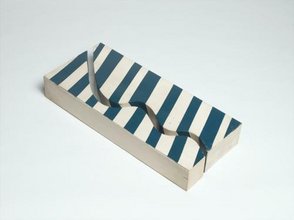
Divan Superonda
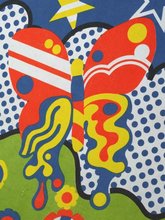
Design textile Farfalle
Bibliography
External links.
La collection du Musée national d’art moderne
- Arches Balconies Bearing Walls Bookcases Bricks Facades Canopies Ceilings Ceramic Floors Chairs & Sofas Columns Concrete Structures Courtyards Curtains Curved Roofs Daylighting Design Objects Doors Engawa Entrances External Pavings Facade Cladding Systems Fireplaces Fountains & Reflecting Pools Furniture Gates Glass Facades Glass Partitions Glass Roofs Green Roofs Handles Hanging Walkways Indoor Stairs Interior Lighting Lamps Massive Walls Metal Claddings Outdoor Stairs Patios Points of View Porches Private Indoor Stairs Private Pools Public Indoor Stairs Railings Ramps Roof Gardens round windows Shop Windows Skins Skybridges Slat Facades Sliding Elements Sloping Roofs Solar Shading Systems Spiral Stairs Steel Structures Stone Facades Stone Floors Stone Walls Tables Terraces Terracotta Facades The architecture of the corner Urban Furniture Vaults Vertical Gardens Window Frames Windows Wooden Facades Wooden Floors Wooden Partitions Wooden Structures
- Aarhus Abu Dhabi Ahmedabad Alicante Amsterdam Antwerp Athens Bangkok Barcelona Basel Beijing Beirut Berlin Bilbao Bologna Bordeaux Brasília Brussels Budapest Buenos Aires Chandigarh Chengdu Chicago Ciudad de México Coimbra Copenhagen Córdoba Doha Dresden Dubai Dublin Florence Frankfurt Geneva Ghent Göteborg Granada Hamburg Hangzhou Havana Helsinki Hong Kong - Shenzhen Istanbul Jerusalem Krakow Kyoto Lausanne Lille Lisboa London Los Angeles Lyon Madrid Málaga Malmö Marseille Melbourne Miami Milano Montreal Moscow Munich Nantes Napoli New York City Osaka Oslo Paris Porto Prague Reykjavik Rio de Janeiro Roma Rotterdam San Francisco Santiago de Chile São Paulo Seattle Seoul Seville Shanghai Singapore Stockholm STRASBOURG Stuttgart Sydney Tarragona Tbilisi Tehran Tel Aviv Tokyo Toronto Turin Valencia Venezia Vienna Warsaw Washington Yokohama Zaragoza Zürich
- African Houses American Houses Argentinian Houses Australian Houses Austrian Houses Balkan Houses Baltic Houses Beach Houses Belgian Houses Brazilian Houses Brick Houses British Houses Canadian Houses Chilean Houses Chinese Houses Concrete Houses Country Houses Croatian Houses Czech Houses Danish Houses Dollhouses Dutch Houses East-European Houses French Houses German Houses Greek Houses Holiday Houses Houses by Artists Houses for Architects Hungarian Houses Icelandic Houses Indian Houses Irish Houses Israeli Houses Italian Houses Italian Rural Houses Japanese Non-Urban Houses Japanese Urban Houses Korean Houses Latin-American Houses Mediterranean Houses Mexican Houses Microhouses Middle-east Houses Mountain Houses Narrow Urban Houses New Zealand Houses Paraguayan Houses Peruvian Houses Pet Houses Polish Houses Portuguese Houses Restored Houses Romanian Houses Scandinavian Houses Single-family Houses South-East Asian Houses Spanish Houses Swiss Houses Tree Houses Turkish Houses Uruguayan Houses Villas Windowless Houses Wooden Houses Woodland Houses
- Alberto Campo Baeza. Varia Architectonica Alfredo Pirri. Make and Remake Álvaro Siza. Time is the Best Architect Beniamino Servino. Monumental Need Bolles + Wilson. Tacuit et fecit Curves Dario Passi. Architecture Drawings DOMESTIC SCENES. HOMAGE TO JULIUS SHULMAN Explosions Fascinations for Structures Giorgio Grassi Drawings Grammar of the Limit Ideas for Bridges Ideas for Burial Ideas for Civic Buildings Ideas for Coastal Redevelopment Ideas for Conservation and Reuse Ideas for Cultural Centers Ideas for Domestic Interiors Ideas for Health Facilities Ideas for Hospitality Ideas for Houses Ideas for Housing Blocks Ideas for Industrial Facilities Ideas for Installations and Exhibitions Ideas for Interiors of Libraries Ideas for Kindergartens Ideas for Landmarks Ideas for Landscape Design Ideas for Libraries Ideas for Memorials Ideas for Micro Architecture Ideas for Mixed-Use & Business Districts Ideas for Mountain Huts Ideas for Museums Ideas for Office Blocks Ideas for Performing Arts Buildings Ideas for Performing Arts Spaces Ideas for Public Interiors Ideas for Public Parks Ideas for Religious Buildings Ideas for Sacred Spaces Ideas for Schools Ideas for Spaces for Art Ideas for Sport Venues Ideas for Stadiums Ideas for Stairs Ideas for Streets & Squares Ideas for Town Halls Ideas for Transportation Facilities Ideas for Universities Ideas for Urban Planning Il Cerchio - Homage to Bruno Munari Il Quadrato - Homage to Bruno Munari Il Triangolo - Homage to Bruno Munari Imaginary Landscapes Insistence of Nature Isometric. Oblique Drawing Luca Galofaro. Atlas of Notes Montages Orthogonal Radical Resistance Reality and Fantasy Renato Rizzi. Anger of Form Scrapbook Steven Holl. Working with Doubts Topographies Topology of Neighborhoods Urban Visions
- Bamboo Black Blue Bricks Cardboard Carpets Coloured Concrete Colours Concrete Cor-ten Cyan Diaphanous and Translucent Exploring Patterns Fabric Glass God is in the Details Gold Green Grey Ice Marble Membranes Metals Orange Perforated Pink Plaster Polycarbonate Purple Rammed Earth Red Stone Terracotta The Importance of Being Material Tiles Timber Wallpapers White Yellow
- Details of Facades Details of Frames Details of Interiors Details of Outdoor Spaces Details of Roofs Details of Stairs Details of Structures Plans of Apartment Blocks Plans of Apartments Plans of Bars and Restaurants Plans of Civic Buildings Plans of Cultural Centers Plans of Health Facilities Plans of Hotels Plans of Kindergartens Plans of Libraries Plans of Museums Plans of Office Blocks Plans of Offices Plans of Performing Arts Centers Plans of Public Spaces Plans of Religious Buildings Plans of Schools Plans of Shops Plans of Single-family Houses Plans of Sport Facilities Plans of Transportation Facilities Sections
- Apartment Renovations Australian Interiors Austrian Interiors Austrian Interiors - Vienna Bathrooms Bedrooms Belgian Interiors Brazilian Interiors Brick Interiors British Interiors British Interiors - London Chinese Interiors Chinese Interiors - Beijing Concrete Interiors Dining Rooms Duplex Dutch Interiors Dutch Interiors - Amsterdam East European Interiors French Interiors French Interiors - Paris German Interiors German Interiors - Berlin Greek Interiors grid-like interiors Home Offices Indian Interiors Interiors Irish Interiors - Dublin Italian Interiors Italian Interiors - Apulia Italian Interiors - Campania Italian Interiors - Emilia-Romagna Italian Interiors - Friuli Venezia Giulia Italian Interiors - Lazio Italian Interiors - Liguria Italian Interiors - Lombardy Italian Interiors - Marche Italian Interiors - Milan Italian Interiors - Piedmont Italian Interiors - Rome Italian Interiors - Sardinia Italian Interiors - Sicily Italian Interiors - Trentino Alto Adige Italian Interiors - Turin Italian Interiors - Tuscany Italian Interiors - Umbria Italian Interiors - Veneto Italian Kitchens Japanese Interiors Japanese Interiors - Tokyo Japanese Kitchens Kitchens Latin-American Interiors Living Rooms Lofts and Penthouses Machine à Habiter Middle-East Interiors Middle-East Interiors - Tel Aviv Mountains Interiors North-American Interiors North-American Interiors - New York Portuguese Interiors Portuguese Interiors - Lisbon Portuguese Interiors - Porto Reused for Living Saunas Scandinavian Interiors Southeast Asia Interiors Spanish Interiors Spanish Interiors - Barcelona Spanish Interiors - Madrid Spanish Interiors - Valencia SPANISH KITCHENS Stone Interiors Swiss Interiors Tropical Interiors Un-private Interiors Vernacular Interiors wardrobe Wooden Interiors
- Archives Art Galleries Art Studios and Workshops Atriums Auditoriums Beauty Salons Canteens Classrooms Clinics Clubs & Discos Coffee Shops Coloured Interiors Corridors Co-working Day Centres Delis & Fast food Entrance Halls Gyms Interior Voids Italian Bars Libraries Lobbies Locker rooms Offices and Studios Offices of Architecture Post-industrial Interiors Receptions Reused for Culture Reused for Hospitality Reused for Learning Reused for Recreation and Training Reused for Working & Trading Sacred Spaces Showrooms and Shops Space for Art Toilets Wellness Facilities and Spas
- Additions Architects' Notebooks Architectural Drawings Architectural Models Architecture and Water Architecture Goes Wild Art and Architecture Bell'Italia Below Ground Zero Beyond Minimal Brutalism Building High Building in Between building in historical context Building in Landscape Building in Urban Context Building Together By Night Cantilevers: Dialogues with Gravity Concrete Expressions Containers Critical Conservation & Transformative Reuse Dialogues with History Don't get Lost Enfilades Ephemeral Existenzminimum Extra Small Folding Architecture Forgotten & interrupted Going Places Handmade Inflated Architecture Inside Modernism Into the Wild Is Ornament a Crime? Italian Beach Houses Italian Drawings Italian Modern Heritage Italian Restorations La Biennale di Venezia Labyrinths La Piazza Italiana Less is More, More or Less Light & Shadows Lite Made in Italy Metropolis Milano Design Week Modern Heritage Mountains Architecture Nervi Factor Old Masters Pets Photo Essays Piranesi Factor Playgrounds Portraits Post-industrial Architecture Public Sitting Redundancy Reflections Repurposed Recycled Reused Restored and Reused Rural Modernity Schools of Architecture Seashore Architecture Sequences Silos Social Subtraction SUSTAINABLE ARCHITECTURE SUSTAINABLE HOUSES Temporary Gardens The Fifth Facade The Informal City Turning from Brown to Green Typography & Architecture Un Certain Regard Urban Corners Urban Facades Urban Graffiti Vernacular Volumes! Walking and Cycling WIP - Work in Progress
- Administrative Centers Airports Apartment Blocks Archaeological Parks Arenas Bars Beach Facilities Bike Stations Boathouses and Marinas Bus Stops Camping Car Parks Catwalks Chapels Churches Cinemas City and Town Halls Civic Centers Colleges and Universities Concert Halls Convention Centers Convents, Monastries, Parishes Courthouses Covered Squares Cultural Centers Deck Access Blocks Exhibit Design Exhibition and Fair Centers Expo Pavilions Fair Stands Fire & Police Stations Footbridges Funerary Funerary Chapels Garages, Depots and Warehouses Garden Studios Gas Stations, Rest Areas and Toll Gates Green and Scenic Walkways Greenhouses Headquarters Hospitals & Health Centers Hostels and Guesthouses Hotels Industrial Buildings Installations Italian Churches Kindergartens and Pre-schools Landscape Design Libraries and Mediatheques Maritime Facilities Memorials Metro Stations Mosques Mountain Huts Museums Music Schools and Art Academies Nursing Homes Office Blocks Outdoor Performing Arts Venues Outdoor Sports Fields Pavilions Power Plants Primary Schools Prisons & Detention Centres Private Gardens Public and Social Housing Research Centers Residential Complexes Restaurants Retail Markets Row Houses Scenographies Secondary Schools Shopping Centers Skateparks Small Apartment Blocks Small Urban Gardens Sport & Country Clubs Sport Halls Squares & Streets Stadiums Student Halls Student Houses Swimming Pools Synagogues Tea Houses Temples Theaters Tourist Routes Tower Blocks and Skyscrapers Traffic Bridges Training Centers Train Stations Transportation Hubs Urban Parks Visitor Centers Waterfronts and Coastal Redevelopments Wineries and Distilleries Zoos and Animal Shelters
May be because we wanted to distinguish divisare from the web that is condemned to a sort of vertical communication, always with the newest architecture at the top of the page, as the "cover story," "the focus."
Content that was destined, just like the oh-so-new architecture that had just preceded it a few hours earlier, to rapidly slide down, day after day, lower and lower, in a vertical plunge towards the scrapheap of page 2.
So we began to build divisare not vertically, but horizontally.
Our model was the bookcase, on whose shelves we have gathered and continue to collect hundreds and hundreds of publications by theme. Every Collection in our Atlas tells a particular story, conveys a specific viewpoint from which to observe the last 20 years of contemporary architecture. A long, patient job of cataloguing, done by hand: image after image, project after project, post after post. Behind all this there is the certainty that we can do better than the fast, distracted web we know today, where the prevailing business model is: "you make money only if you manage to distract your readers from the contents of your own site." With divisare we want to offer the possibility, instead, of perceiving content without distractions. No "click me," "tweet me, "share me,” "like me." No advertising. banners, pop—ups or other distracting noise.
It is a different idea of the web, which we might call slow web.
- Selected Projects
- General Index
- Albania Algeria Angola Saudi Arabia Argentina Armenia Australia Austria Bahrain Bangladesh Belgium Belarus Bosnia and Herzegovina Brazil Bulgaria Canada Czech Republic Chile China Cyprus Colombia Korea (Republic of) Costa Rica Croatia Cuba Denmark Ecuador Egypt El Salvador United Arab Emirates Estonia Finland France Georgia Germany Ghana Japan Jordan Greece Guatemala Hong Kong India Indonesia Iran (Islamic Republic of) Ireland Iceland Israel Italy Kuwait Latvia Lebanon Lithuania Luxembourg North Macedonia Malaysia Malta Morocco Mexico Montenegro Norway New Zealand Netherlands Pakistan Panama Paraguay Peru Poland Portugal Puerto Rico United Kingdom of Great Britain and Northern Ireland Dominican Republic Romania Rwanda Russian Federation San Marino Serbia Singapore Syrian Arab Republic Slovakia Slovenia Spain United States of America South Africa Sweden Switzerland Taiwan, Province of China Thailand Tunisia Turkey Ukraine Hungary Uruguay Venezuela (Bolivarian Republic of) Viet Nam
- A Coruña Ahmedabad Amsterdam Antwerpen Athens Bangalore Bangkok Barcelona bari 4056 Basel Beijing Beirut Bergamo Berlin Bogotá Bologna Bordeaux Braga Bratislava Brescia Brussels Bruxelles Bucuresti Budapest Buenos Aires Cagliari Caserta Chicago Copenhagen Córdoba Curitiba Delft Dublin Ferrara Firenze Genève Genova Gent Ghent Granada Graz Guadalajara Hamburg Helsinki Hong Kong Innsbruck Istanbul Köln Kraków Kyiv Lausanne Lima Lisboa Lisbon Ljubljana London Los Angeles Lugano Lyon Madrid Marseille Mendrisio Mexico City Milan Milano Montevideo Montpellier Montreal Moscow München Munich Nantes Napoli New York Oslo Padova Palermo Pamplona Paris Porto Prague Praha Quito Riga Rio de Janeiro Roma Rome Rotterdam San Francisco Santiago São Paulo Seoul Sevilla Shanghai Shenzhen Singapore Stockholm Strasbourg Stuttgart Sydney Taipei Tehran Thessaloniki Tirana Tokyo Torino Toronto Toulouse Valencia Valladolid Venezia Verona Vibo Valentia Vienna Vilnius Warsaw Zagreb Zurich Zürich
- Search designers
- Argentina Australia Austria Bangladesh Belgium Belarus Brazil Bulgaria Canada Czech Republic Chile China Cyprus Colombia Korea (Republic of) Côte d'Ivoire Croatia Cuba Denmark Ecuador United Arab Emirates Estonia Finland France Georgia Germany Japan Greece Guatemala Hong Kong India Indonesia Iran (Islamic Republic of) Ireland Iceland Israel Italy Kuwait Latvia Lebanon Lithuania Luxembourg Malaysia Mexico Norway New Zealand Netherlands Paraguay Peru Poland Portugal Puerto Rico United Kingdom of Great Britain and Northern Ireland Romania Russian Federation Serbia Singapore Slovakia Slovenia Spain United States of America South Africa Sweden Switzerland Taiwan, Province of China Thailand Tunisia Turkey Ukraine Hungary Uruguay Venezuela (Bolivarian Republic of) Viet Nam
- A Coruña Ahmedabad Amsterdam Antwerp Antwerpen Athens Atlanta Auckland Bali Bangalore Bangkok Barcelona Basel beijing Beijing Beirut Belgrade Bergen Berlin Bern Bilbao Billings Bogotá Bordeaux Braga Bratislava Brooklyn Brussels Bruxelles Bucharest Bucuresti Budapest Buenos Aires Cape Town Caracas Chiang Mai Chicago Chongqing Ciudad del Mexico Cologne Conegliano Copenhagen Cordoba Córdoba Curitiba Delft Denver Dhaka Dortmund Dublin Düsseldorf Edinburgh Firenze Forlì Geneva Genève GHent Ghent Glasgow Göteborg Granada Graz Guadalajara Guangzhou Haarlem Hamburg Hangzhou Hanoi Heidelberg Helsinki Hong Kong Innsbruck Istanbul Jakarta Kalmthout Karlsruhe Kerala Kiev København Köln Kortrijk Kuala Lumpur Kyoto Lausanne Leipzig León Lima Lisboa Lisbon Ljubljana London Los Angeles Lugano Lyon Maastricht Madrid Malmö Manchester Mannheim Mantova Marseille Melbourne Mendrisio Merida Mexico City Miami Milano Minsk Monterrey Montevideo Montpellier Montreal Montreuil Moscow Mumbai München Munich Nantes New Delhi New York New York City Osaka Oslo Palma de Mallorca Pamplona Paris Perm Perth Porto Prague Praha Quito Reykjavik Reykjavík Riga Roma Rome Rosario Rotterdam San Francisco Santiago São Paulo Seattle Seoul Sevilla Shanghai Singapore Sofia Stockholm Strasbourg Stuttgart Suzhou Sydney Taipei Tallinn Tasmania Tehran Tel Aviv Tel-Aviv Tokyo Torino Toronto Toulouse Trento Utrecht Valladolid Vancouver Venezia Venice Victoria Vienna Vilnius Warsaw Washington Zagreb Zaragoza Zurich Zürich
- Search photographers
Divano Safari
Designed by Archizoom / Paolo Deganello, 1966. Produced by Poltronova.

Introduced at the Galleria Jolly2 Exhibition, the life-size model in laminate and plywood was manufactured by Poltronova in Sky-covered foam resin, produced in three colours: white, red and black. Composable sofa for the mostb varied solutions. frame in fiberglass, padding in foam rubber, covering in artificial leopard skin, fabric or leather. Bye request, small carpet with supports in expanded resin. An imperial piece in the dreariness of your domestic walls. A piece that is finer than you. A very beautiful piece that you would not deserve. Clear your sitting-room! Clear also your life!

- Chairs & Sofas
- Made in Italy
FREE U.K. SHIPPING ON ORDERS OVER £75 | TEL: 01493 497705
- FABRIC & WALLPAPER
- INTERIOR DESIGN

- Dining Chairs
- Poufs & Footstools
- Stools & Barstools
- Dining Tables
- Coffee & Side Tables
- Coat Stands & Hangers
- Cupboards & Wardrobes
- Sideboards & Chests
- Room Dividers
- Children's Furniture
- Dining Room
- Living Room
- Table Lamps
- Floor Lamps
- Pendant & Suspension
- Cole & Son
- Christian Lacroix
- Kvadrat / Raf Simons
- Matthew Williamson
- Timorous Beasties
- Arte x Moooi Wallcovering
- Flavor Paper for Arte
- Missoni Home
- Osborne & Little
- Decorative Sculptures
- Cushions & Throws
- Tabletop & Kitchen
- Books & Magazines
- Candles & Scents
- Music & Entertainment
- Moooi Carpets
- Golran 1898
- Memphis Milano
- L'Objet
- Arte Wallcovering
- Elena Salmistraro
- Jaime Hayon
- Marcel Wanders
- Marcantonio
- Maarten Baas
- Ettore Sottsass
- Interior Design
- Riverside Road
- City Penthouse
- Stackyard House
- Dove Street
- Outdoor Living
15% OFF FULL PRICE ITEMS WITH CODE "15OFF" AT CHECKOUT | ENDS FRI 7TH JUNE (EXCLUSIONS APPLY)

Safari Sofa by Archizoom Associati
Safari Sofa by Archizoom Associati - Complete Sofa is backordered and will ship as soon as it is back in stock.
The Safari sofa is a multiple seat with the profile of the backrest shaped like a series of waves, one gathers in the central void, accessed through an opening, as in a sort of tribal ritual. The piece of furniture consists of four pieces of two different types (two armchair modules and two sofa modules).
The Safari sofa was put into production for the first time by Poltronova in 1968. The experimental fibreglass technique was used for the structure. For the seat and backrest upholstery, Archizoom chose a printed animal pattern fabric with a Leopard print. The same pattern is used for the polyurethane foam carpet placed between the seats. 2022 sees the re-introduction of this iconic sofa to the Poltronova catalogue.
Available in three faux fur colourways: Plain White, Grey Leopard, Yellow Leopard.
- Design: Archizoom Associati (1967) Materials: Frame in White Fibreglass, Polyurethane Foam
- Upholstery: Faux Fur with Leopard Animal Print
- Carpet: Polyurethane Foam Covered in Faux Fur with Leopard Animal Print
- Dimensions Complete Sofa: L260 x W215 x H64cm
- Dimensions Armchair: L85 x W85 x H64cm
- Dimensions Seater Sofa: L130 x W130 x H64cm
- Weight: 130kg
- Handmade in Italy
- Excluded From Online Discounts
- Made To Order
- Lead Time Approx: 14 Weeks
Jane Richards Interiors 8a Deneside Great Yarmouth NR30 2HL United Kingdom
Email: [email protected] Telephone: +44 (0) 1493 497705
- Delivery & Returns
- Terms & Conditions
- Privacy & Cookies
- Terms of Service
- Refund Policy
Subscribe to receive updates, access to exclusive deals, and more.
Side Gallery

ARCHIZOOM ASSOCIATI

Please login to bookmark
No account yet? Register
Your friend's email*
Sign up for the newsletter

ENQUIRE ABOUT THE DESIGNER

What Archizoom Associati Taught Us
Archizoom Associati was born in 1966 when four Florentine designers and architects, Andrea Branzi, Gilberto Corretti, Massimo Morozzi and Paolo Deganello, came together with a shared vision and common desire to push forward avant-garde design. The Italian architecture and design studio operated prolifically from 1966–1974. An investigational and utopian practice, Archizoom pioneered the Florentine Radical movement, as well as serving as a central voice of the Radical Architecture movement. Although it only existed as a formal office for less than a decade, its inventive concepts and ideas retain an esteemed status today and are ubiquitous topics covered in design and architectural curricula, and many of the studio’s works are highly collectable, appearing in prominent museum collections around the world.
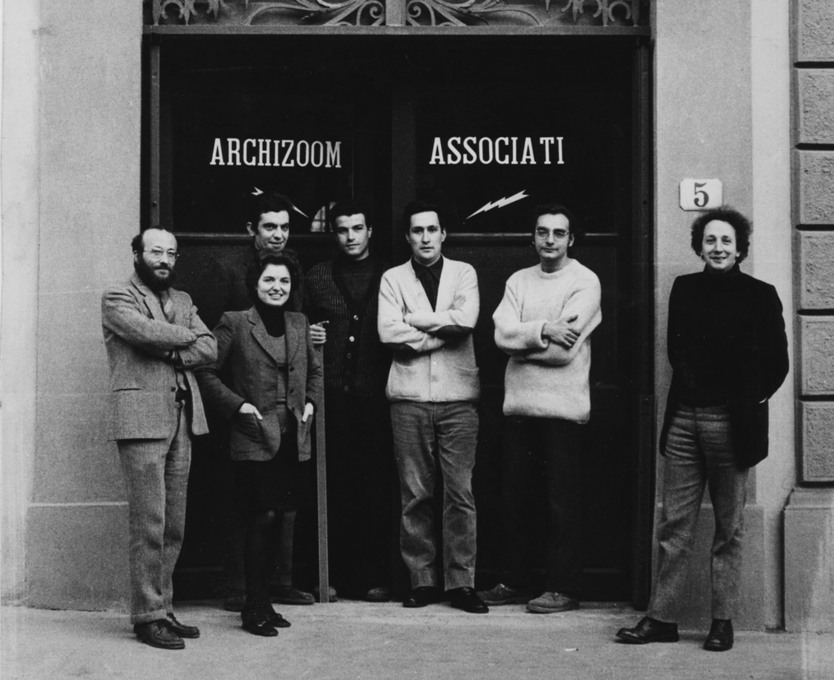
Their first seminal project came in the form of an exhibition entitled Superarchitettura , created in collaboration with Superstudio, another Florence-based design firm; the collaborators presented prototypes of innovative furnishings alongside colourful projections to create an immersive and surreal environment. The following year, Archizoom organised a second exhibition, titled Superarchitettura 2 , progressively gaining more attention. It was shortly after this that the office brought on two new members, the designers Dario and Lucia Bartolini. This new creative energy spurred on Archizoom’s output dramatically, challenging Italian design customs further while reflecting the sensibilities of the Pop Art age.
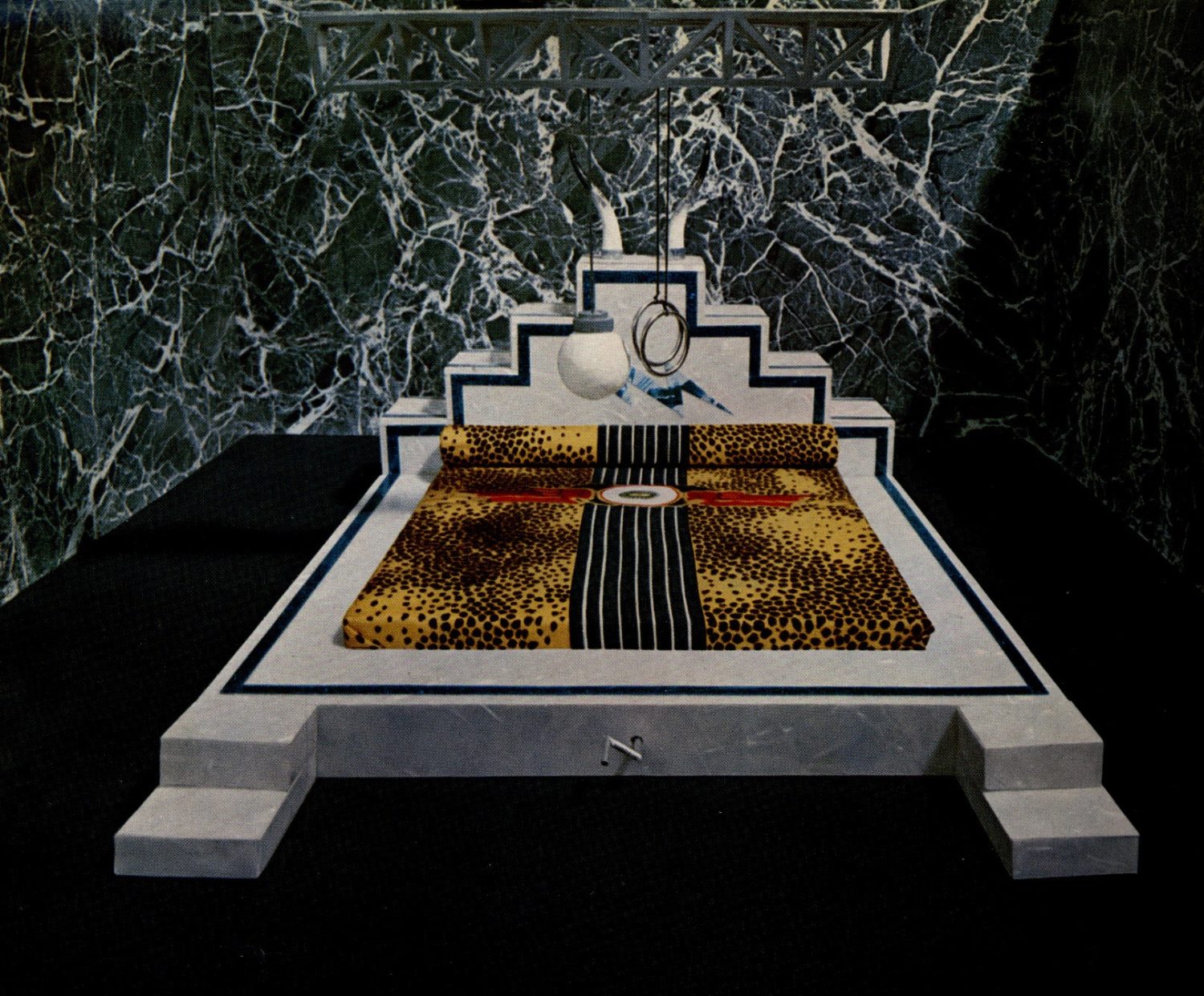
Through their experimental practice, Archizoom’s members established new guidelines for art, architecture, and design and the ways in which all three could be integrated into modern life. Perhaps most exemplary of this ethos is their exhibition No-Stop City , installed in 1970, which applies their unique design approach to the realm of the modern metropolis. Offering a unique vision of urbanisation, the project was a theoretical endeavour, first appearing as a detailed plan published in Casabella magazine in 1970 with the name “City, assembly line of social issues, ideology and theory of the metropolis.” In this city without architecture and its aesthetic value, humans live in a continuous flow of information, markets and services, and routinely use nature to create and decorate their environments.

Alongside their directional exhibitions, the practice created numerous pieces of influential furniture over the years. Some of the most significant designs include the Superonda Sofa , 1966, designed by Andrea Branzi, first made from foam and vinyl and later produced with polyurethane blocks cut into two S-shape parts that can be utilised in multiple configurations; the Safari Sofa , 1966-68, which was made by inserting a semicircle with 6 upholstered seats into a lacquered fiberglass square; and the now infamous Mies Chair , 1969, which brought together the chrome frame employed in the modernist Mies chair along with cowhide elements used by Corbusier, subverting them to comment on dominant consumer tastes of the time.

In 1972, the exhibition Italy: The New Domestic Landscap e at New York’s Museum of Modern Art brought an abundance of new eyes to Archizoom’s work, propelling the practice to international repute. Unfettered by classification or medium, the collaborators investigated the possibilities of Radical design across numerous disciplines. Ultimately though, their individual quests for progression led to the group’s dismembering in 1974 as the members moved on to pursue their respective practices. Their output continues to be influential today, appearing on syllabuses and moodboards alike. Most recently, earlier this year, concluding April 2020, Archizoom’s work was featured at the exhibition Radical: Italian Design 1965-1985 at the Museum of Fine Arts, Houston. Feature image: Archizoom Associati, No-Stop City, Internal Landscapes , 1970. From La Periferia Domestica / Images via Pinterest
Where to Experience the Finest Moroccan Tajine in Marrakech ...
The first time I had a tajine was when Nadja, a Moroccan friend, showed up at my house with a round pot and a long cone-shaped lid, both made of clay. Traditionally, Nadja explained to me, a tajine is a rich mixture of meat, poultry or fish and most often includes only vegetables, along with…
The Home of Fluxus Online
In the 1960s, Fluxus emerged as a global, interdisciplinary art movement that sought to merge diverse artistic mediums and blur the lines between art and everyday life. Associated practitioners — spanning visual artists, composers, designers, and poets — adopted a playful and open-minded approach to art making, often using commonplace objects and actions to challenge…
Sofia Mitsola: “To Fantasise Is to Exercise Your Own Freedom...
Referencing figures from ancient Greek and Egyptian histories, Japanese animation, and pornography, Sofia Mitsola creates her own mythological characters, staging them in grand and theatrical compositions. Opening on 5 June 2024, Pilar Corrias presents Villa Venus: The Garden, an exhibition of new works by the London-based artist. The show marks the latest chapter in her…
Stay up to date with Something Curated
Outdoor Essentials Sale
Safari Complete
$ 54,000.00


About Safari Complete
- Category Accessories Chairs Furniture Rugs Seating Sofas
- Brand Poltronova
- Designed by Archizoom Associati
- Design Year 1967
- Materials Frame in white fibreglass, padding in polyurethane foam, covering in faux fur with leopard animal pattern, rug in polyurethane foam covered in faux fur with leopard animal pattern
- Diameter 84.6
- Height 25.1
Note: production lead time does not include shipping, please refer to our shipping policy for more information.
Safari Complete Technical Specs
Related items.

Cloverleaf Sofa 2 Units

Cloverleaf Sofa 3 Units

Cloverleaf Sofa 4 Units

Superonda Sofa

Superonda Sofa Babele Decoded Limited Edition
- Skip to primary navigation
- Skip to main content
- Skip to primary sidebar
- Skip to footer

Retro Renovation
Remodel & decorate in Mid Century Style
Archizoom Safari Livingscape sofa for Poltronova — behold this 1967 Italian beauty!
Kate - March 15, 2013 , Updated: May 31, 2021
Retro Renovation stopped publishing in 2021; these stories remain for historical information, as potential continued resources, and for archival purposes.
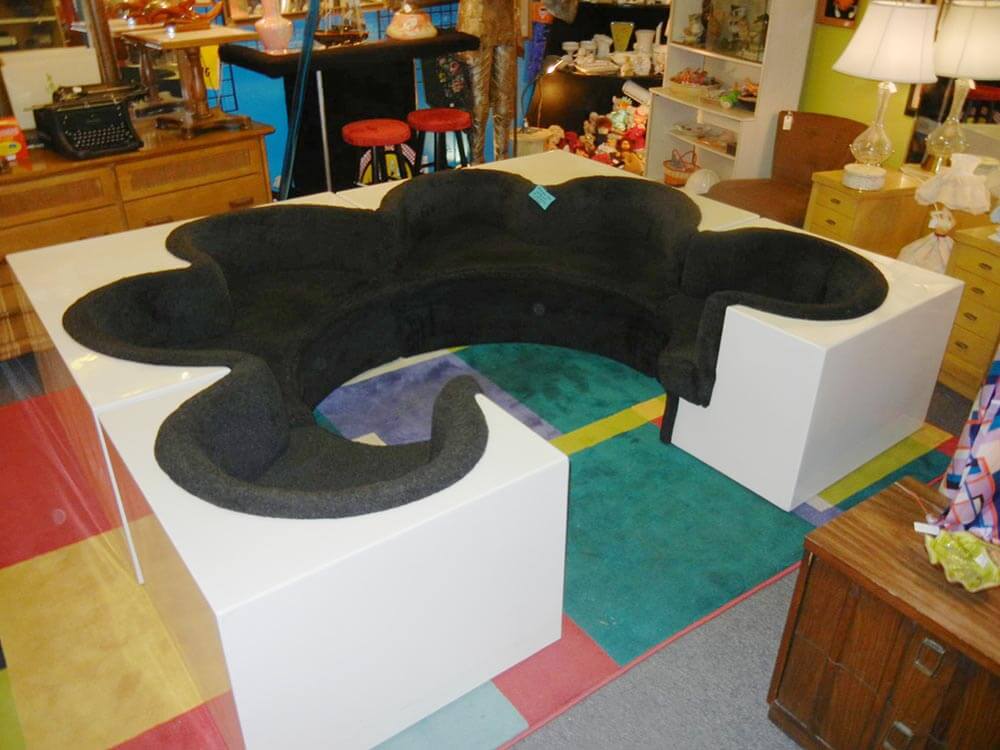
Thanks to Room Service Vintage for giving us permission to feature this 1960s Italian beauty.
Lori at the store told me that this furniture came from the original owner. I actually spotted this photo on Room Service Vintage’s Facebook page … via Mod Squad Picking’s Facebook page (I like to give credit, cuz love makes the world go round.)
Anyway, the Archizoom Safari Livingscape sofa sectional is for sale at Room Service Vintage for $7,500. That sort of sounds like a lot — except that the auction listing archived on the Architonic page valued the model archived there at 30.000-40.000 Euros, which calculates to $39,000 to $52,000. I don’t know whether these two examples make for a truly apples-to-apples comparison, but either way, them sure are some nice apples.
I dug some more on the intertubes, and found the news release for the 2003 auction. The relevant bit says:
Radical Design , which came up in the late 1960s in response to “good” Italian design, was an attempt at modifying the general perception of modernism through utopian ideas and visions. Two significant works offered in the sale were created by chief protagonists of this movement: the Safari livingscape by Archizoom Associati (1967/1968, € 30,000 – 40,000) and…
One academic treatise I read (link now gone) also included some original quotes from the period indicating that designers were apparently aiming for this sofa to flaunt all precepts of “good taste.”

Reader Interactions
Comments are closed.
May 17, 2014 at 12:49 pm
The sofa is comfortable , good to put a small round Saarinen table in The center , I have one )
March 18, 2013 at 7:17 pm
Room Service is a great store — I’ve made some good finds there. It’s just a fun place to browse. Worth visiting for mid-century/vintage fans who pass through Austin.
BlueJay says
March 15, 2013 at 11:32 pm
Ha! I was JUST there a couple of days ago; this must have come in after. I scored some vintage shirts in tall from Room Service Vintage! The store is fantastic and has become a must-do stop when we visit there. 😀

Follow Along
- RENOVATE SAFE
- The “Museum”
- Other Rooms
- Terms of Service
- Privacy Notice
- Disclosures

Archizoom Associati
Italian architectural and design studio.
Archizoom Associati (1966–1974) was a dynamic and utopian Italian architectural and design studio, one of the founders of the Florentine Radical movement, and the strongest voice of the Radical Architecture movement. Although it was an organized movement for less than a decade, its concepts hold a revered status today and are standard topics covered in design and architectural curricula, and many of the studio’s designs and products are in prominent museum collections around the world.
Gilberto Corretti, Massimo Morozzi and Andrea Branzi found Archizoom
The advent of Archizoom was thanks to four pioneering Florentine designers and architects— Andrea Branzi (1938), Gilberto Corretti (1941), Massimo Morozzi (1941–2014), and Paolo Deganello (1940)—who joined forces in 1966 bound by their shared vision for avant-garde design. They channeled this energy into their first exhibition, titled “Superarchitettura,” in which the members of Archizoom partnered with Superstudio, another Florentine design firm. In this showcase, they paired sample prototypes of revolutionary furnishings with colorful projections to create an almost otherworldly space.
The next year, Archizoom organized its second exhibition, titled “Superarchitettura 2.” Shortly thereafter, Archizoom added two new members, the designers Dario Bartolini (1943) and Lucia Bartolini (1944), into its collaborative studio. The infusion of these new creative spirits accelerated Archizoom’s momentum and assertiveness, and the traditional elements of refined and elegant Italian design were set aside in favor of playful, boundary-pushing forms that echoed the energy of the contemporary Pop Art age. read more

No-Stop City
By breaking these rules, Archizoom’s members also established new parameters for art, architecture, and design and the ways in which all three could be integrated into the modern lifestyle. To that end, their design of the exhibition “No-Stop City” (1970) revealed their powerful ability to expand their design thinking to the realm of the modern city by incorporating a novel vision of urbanization.
No-Stop City is a theoretical project that was published for the first time in Casabella magazine in 1970 with the name “City, assembly line of social issues, ideology and theory of the metropolis.” The project proposes an evolving city without architecture, built with a repetitive pattern with numerous hubs that form a continuous even structure. In this utopian structure, the pattern is only broken by natural features such as rivers or hills, and people live in tents.
In this city without architecture and its aesthetic value, humans live in a continuous flow of information, markets and services, and routinely use nature to create and decorate their environments. Spaces are adorned with rocks and branches that coexist with industrially generated materials and the basic tools of modern existence and transportation such as motorcycles and electric appliances.
Important furniture designs by Archizzoom
Among the most important furniture designs created by the Archizoom while the movement still formally existed are: the Superonda sofa (1966) designed by Andrea Branzi, which was first a foam-and-vinyl sofa, but later produced with two polyurethane blocks cut into two S-shape parts that can be stacked to different configurations; Dream bed, or Letti di Sogno, by Gilberto Corretti (1967)’ the Safari Sofa (1967-1968), which was made by inserting a semicircle with 6 upholstered seats into a lacquered fiberglass square; the San Remo halogen floor lamp (1968) which was an engagement present from Dario Bartolini to Lucia Morozzi, but designed by famed modernist architect Ernesto Nathan Rogers , in the shape of a palm tree with metal and stem base and methacrylate plastic pendant foliage; the now iconic Mies Chair (1969), which took the chrome frame used in the modernist Mies chair and cow hide elements used by Corbusier and reconfigured them to express a critical view point to the consumerism preferences prevalent at the time.

Museum exhibitions of Archizoom furniture, and designs and architectural concepts
Their work ascended to international acclaim with the display of their creations at the landmark 1972 exhibition “Italy: The New Domestic Landscape” at the Museum of Modern Art (MoMA) in New York. Most recently, Archizoom was featured at the exhibition “Radical: Italian Design 1965-1985, The Dennis Freeman Collection.” at the Museum of Fine Arts, Houston (February 14, 2020–April 26, 2020).
Unbound by a particular medium, the masterminds of Archizoom explored the implications of Radical design across various disciplines. It was perhaps their individual quests for ongoing innovation that led to the group’s dissolution in 1974 as the members moved on to pursue their own practice.
For additional information on Archizoom Assciati, please visit:
“ Archizoom Associati .” Poltronova.
“ Superstudio & Archizoom 1968-1972 .” 032c.
Last updated: March 17, 2020
Let us know if you have suggestions to improve this article by correcting errors, adding updates, or filling important omissions here
Please let us know your thoughts by using this form
Archizoom Associati's products
's products
related products
Since you like Archizoom Associati we think you may like the following products from our collection

Andrea Branzi Anfora - floor lamp

Andrea Branzi Donna - table lamp

Andrea Branzi Drawing

Andrea Branzi flower vase, YG 1203

Andrea Branzi Flying table

Andrea Branzi Giardino cabinet

Andrea Branzi Golden Gate - centerpiece, flower vase

Andrea Branzi Pierced Bookcase

Andrea Branzi Green Canaries - glass basket

Andrea Branzi Ipomea - glass vase

Andrea Branzi Nasturzio - glass vase

Andrea Branzi Orange Canaries - glass basket

Andrea Branzi Glass baskets - set of five

Andrea Branzi Domestic Animals chair

Andrea Branzi Violet Canaries - glass basket

Andrea Branzi Platone chandelier

Andrea Branzi Red Canaries - glass basket

Andrea Branzi Sugheri II - centerpiece

Andrea Branzi Uomo cactus - wall tapestry

Andrea Branzi Yellow Canaries - glass basket

Andrea Branzi Grande Arco cabinet
Since you like we think you may like the following products from our collection

Structured data
Items portrayed in this file, copyright status, copyrighted, copyright license, creative commons attribution-sharealike 2.0 generic, creative commons attribution-sharealike 1.0 generic, gnu free documentation license, version 1.2 or later, creative commons attribution-sharealike 2.5 generic, creative commons attribution-sharealike 3.0 unported, source of file, original creation by uploader, 31 august 2007.
- SVG flags of cities and villages of Moscow Oblast
- Culture of Elektrostal
- License migration redundant
- CC-BY-SA-3.0,2.5,2.0,1.0
- Self-published work
Navigation menu

Archizoom Associati Modular Safari Imperial Sofa for Paltronova, Italy, 1970s
View similar items.
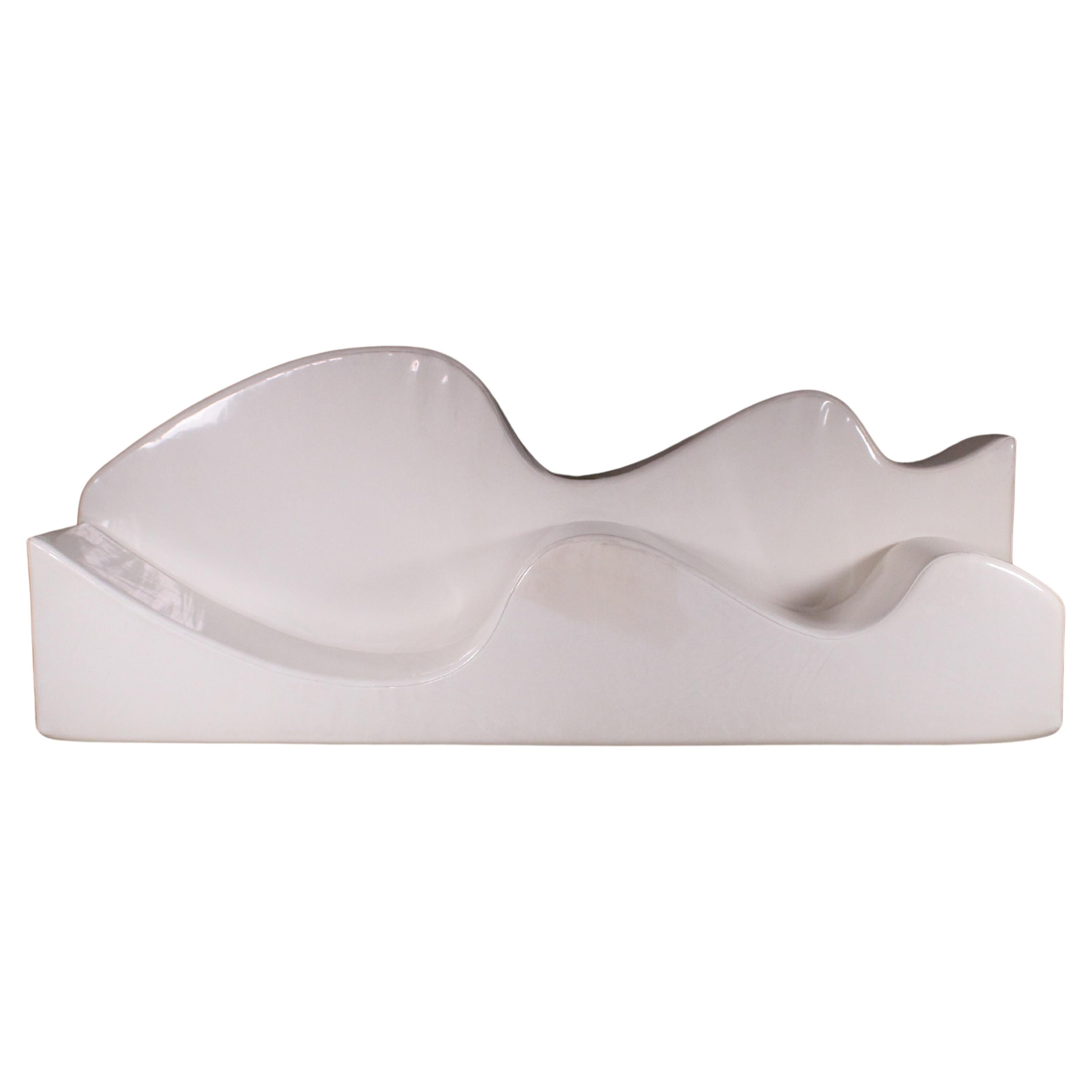
- Item Details
- Seller Information
About the Item
- Creator : Archizoom Associati (Designer)
- Dimensions : Height: 25 in (63.5 cm) Width: 103 in (261.62 cm) Depth: 103 in (261.62 cm)
- Style : Space Age (Of the Period)
- Materials and Techniques : Fabric , Fiberglass
- Place of Origin : Italy
- Period : Mid-20th Century
- Date of Manufacture : circa 1968
- Condition : Good Wear consistent with age and use. Some scuffs and scratches to fiberglass. Overall presents very well. Some tiny holes in fabric. New upholstery recommended.
- Seller Location : Dallas, TX
- Reference Number : 1stDibs: LU878524974362

Archizoom Associati
For eight years, Italian architecture and design studio Archizoom Associati challenged modernism and aligned itself with what we now call Radical Design , an avant-garde art movement established largely in Florence that produced exuberant conceptual furnishings and objects that were neither practical nor very commercial. Through iconic works like the Sanremo floor lamp and the Mies lounge chair , Archizoom and other proponents of the movement protested functionalism and explored form, color and material in a way that countered the existing social order.
Founded in 1966 by University of Florence students Andrea Branzi , Gilberto Corretti, Massimo Morozzi and Paolo Deganello , Archizoom questioned mass consumerism and the validity of rapid postwar modernization in their native country. In their architecture initiatives, interiors, installations, furniture and more, Archizoom's members were pioneers of postmodernism — future Memphis Group cofounder Ettore Sottsass was also part of the Radical Design movement — and alongside likeminded collectives such as Superstudio , Ziggurat and UFO, Archizoom drew on Pop art , Minimalism and Arte Povera to expand upon the expressive potential of design. Branzi and his peers were also deeply influenced by the visionary work of London architecture collective Archigram — so much so that the group’s name is inclusive of Zoom, which is the name of a zine published by the British collective .
In Archizoom’s No-Stop City — an unbuilt architecture project — the urban area is stripped bare, a featureless monochromatic expanse that sees built structures meeting nothing more than the basic needs of human existence. The group’s Mies lounge chair — a tribute to early modernist architect Ludwig Mies van der Rohe — was developed for Poltronova and hardly resembles a chair at all. It is not until one sits down that the detached bench seat combines with the backrest and becomes a full seat. The human body bonds the pieces together to make a chair that is surprisingly functional — and even compact.
The Radical Design movement is experiencing something of a renaissance, and Archizoom Associati’s works featured prominently in 2020’s “Radical: Italian Design 1965-1985” at the Museum of Fine Arts, Houston . The collective’s designs were given a global stage in the classic 1972 exhibition “ Italy : The New Domestic Landscape ” at the Museum of Modern Art in New York City, but most of the groups associated with Radical Design dissolved by the mid-1970s. The Mies lounge chair is held in MoMA’s permanent collection.
Find vintage Archizoom Associati seating , lighting and tables on 1stDibs.
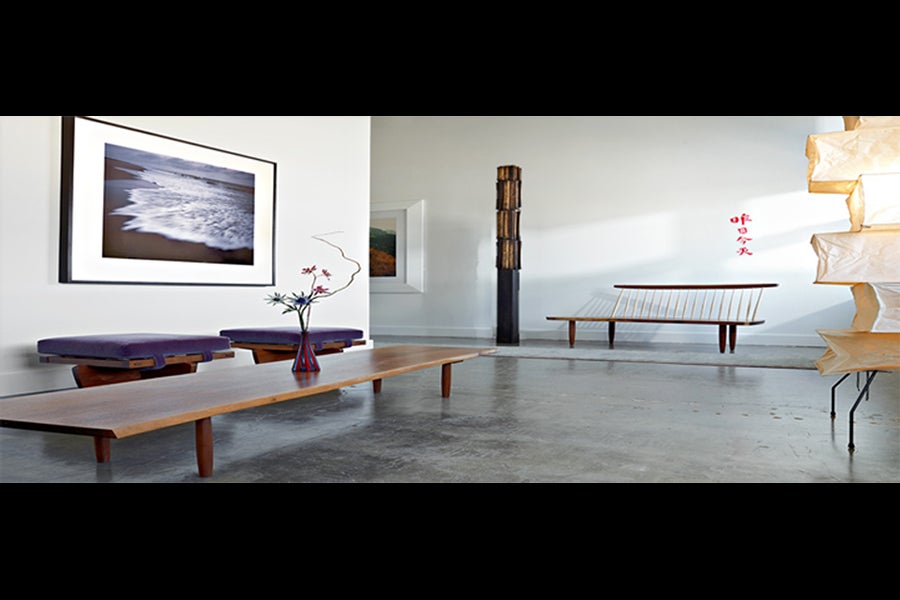
Vintage 1950s American Mid-Century Modern Sofas
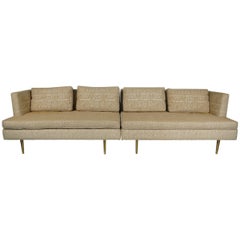
Edward Wormley for Dunbar Even Arm Sofa or Settees
21st century and contemporary italian modern sectional sofas.

Velvet 'Dress-Up' Sectional Sofa Designed by Rodolfo Dordoni for Cassina
Mid-20th century american mid-century modern sectional sofas.

Black Leather Leather 'Cubo' Sectional Sofa by Harvey Probber, 1970s
Mid-20th century swiss mid-century modern sectional sofas.
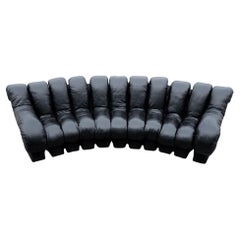
Eleven Element Non Stop Sofa DS-600 by De Sede
20th century swiss mid-century modern sectional sofas.
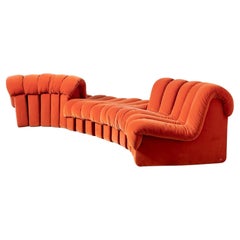
Sofa DS-600 by Eleanora Peduzzi-Riva, De Sede, 1972, Switzerland
Mid-20th century american mid-century modern sofas.
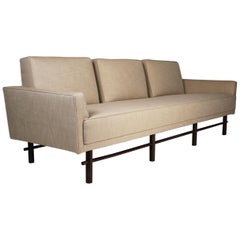
Three Seat Sofa Designed by Michael Taylor for Baker
Vintage 1970s post-modern sofas.
Faux Leather, Foam
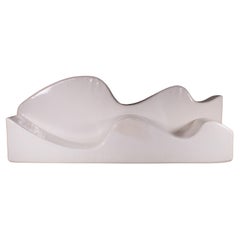
Superonda sofa, Archizoom & Associati, Poltronova 1970s
Vintage 1960s italian space age sectional sofas.
Upholstery, Faux Fur, Fiberglass
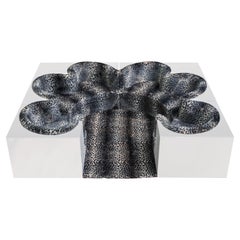
Archizoom Associati SAFARI Seating Pod 'Historic' '1967-2022'
Mid-20th century italian sofas.

'Safari' Mid-Century Italian Sofa by Archizoom Associati for Poltronova
Vintage 1970s italian space age sectional sofas.
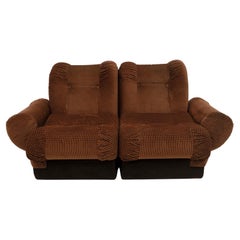
Space Age Italian Velvet Modular Sofa, 1970s
Mid-20th century italian mid-century modern sofas.
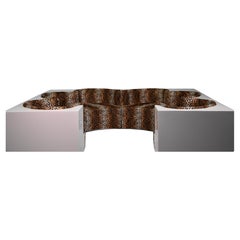
Very Rare Safari Lounge Sofa, Archizoom Associati 1968
Vintage 1960s italian sofas.
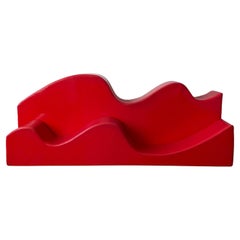
Superonda sofa by Archizoom Associati for Poltronova
Recently viewed, more ways to browse.

IMAGES
VIDEO
COMMENTS
The story of the Safari Sofa. Designed in 1968, this couch was made in Italy. It was born from the brilliant and controversial minds of the four designers of Archizoom studio. The group created the Safari Sofa for the Italian company Poltronova. They had the same philosophy: Make the viewer think. Instead of following everyone else, carve your ...
Giant and with a fiberglass structure, the Safari Sofa features a seat in foam rubber covered with plush. Two superimposed solid pieces form this piece, and one is circular while the second is like a wave. Archizoom's piece reminds the viewer of an African safari with two palms in the corners and a carpet in fake leopard leather.
The Safari sofa was put into production for the first time by Poltronova in 1968. The experimental fibreglass technique was used for the structure. For the seat and backrest upholstery, Archizoom chose a printed animal pattern fabric with a Leopard print. The same pattern is used for the polyurethane foam rug placed between the seats.
Archizoom Association (1966-1974), six-seater sofa model "Safari", Composed of four modules, White lacquered and upholstered fiberglass structure, Foam-padded seats covered with leopard-print fabric, Poltronova edition, circa 1968, Italy.
The Safari sofa was put into production for the first time by Poltronova in 1968. The radical design consists of multiple seats, each of its backrests shaped like a series of waves. The modular nature of the design allows the user to change the layout as he or she pleases. Radical design, Italian design, Vintage Design, rare design, Archizoom ...
A archizoom safari — often made from fiberglass, plastic and fabric — can elevate any home. Whether you're looking for an older or newer archizoom safari, there are earlier versions available from the 20th Century and newer variations made as recently as the 20th Century. A archizoom safari is a generally popular piece of furniture, but ...
This very rare Safari sofa, created in 1968 by Archizoom Associati for Poltronova, it's an original condition and has a fiberglass structure. Two layers of the highest quality foam of different densities provide ultimate seating comfort. . The freedom of form afforded by this fully modular seating system has encouraged a whole new way of organizing living spaces. The Italian radical design ...
"Safari" lounge sofa, Archizoom Associati (assets from 1966 to 1974). Model created in 1968, first edition of Poltronova 1968. In white lacquered fiberglass, composed of four elements forming a rectangular unit, each cut from one or two cells lined with leopard print synthetic fur.
imperial sofa by Archizoom Associati. The Safari sofa is a multiple seat with the profile of the backrest shaped like a series of waves, one gathers in the central void, accessed through an opening, as in a sort of tribal ritual. The piece of furniture consists of four pieces of two different types [two armchair modules and two sofa modules].
ARCHIZOOM ASSOCIATI (Active 1966-1974) "Safari" seating environment designed 1968, limited serial production by Poltronova, four white- lacquered fibreglass sections, each with scalloped seating areas, upholstered in padded synthetic leopard-skin. 100 x 84 x 23¾in. ( 254 x 214 x 60cm )
Canapé Safari 1968. Archizoom Associati ... Archizoom Associati Main title Canapé Safari. Creation date 1968. With Editeur : Poltronova, Italie. Domain Objet/Design | Canap é: Description Canapé modulaire. Techniques Polyester armé de fibre de verre (UP), polyuréthane (PU), textile synthétique ...
Divano Safari. Designed by Archizoom / Paolo Deganello, 1966. Produced by Poltronova. Paolo Deganello. Add to collection. Introduced at the Galleria Jolly2 Exhibition, the life-size model in laminate and plywood was manufactured by Poltronova in Sky-covered foam resin, produced in three colours: white, red and black.
The Safari sofa was put into production for the first time by Poltronova in 1968. The experimental fibreglass technique was used for the structure. For the seat and backrest upholstery, Archizoom chose a printed animal pattern fabric with a Leopard print.
Modular "Safari" Sofa, Italy, 1968, Manufactured by Poltronova, Agliana, Italy, Fiberglass, fabric upholstery. ... Archizoom was an Italian architectural group. Its projects began in the late 1990s, between 1960 and 1970. In 1974 the group was dissolved.
Archizoom Associati was born in 1966 when four Florentine designers and architects, Andrea Branzi, Gilberto Corretti, Massimo Morozzi and Paolo Deganello, came together with a shared vision and common desire to push forward avant-garde design. ... Safari Sofa designed by Archizoom/Paolo Deganello, 1966. Produced by Poltronova. Alongside their ...
Safari Complete by Archizoom Associati for Poltronova. The Safari sofa is a multiple seat with the profile of the backrest shaped like a series of waves, one gathers in the central void, accessed through an opening, as in a sort of tribal ritual.The piece of furniture consists of four pieces of two different types (two armchair modules and two sofa modules).
Anyway, the Archizoom Safari Livingscape sofa sectional is for sale at Room Service Vintage for $7,500. That sort of sounds like a lot — except that the auction listing archived on the Architonic page valued the model archived there at 30.000-40.000 Euros, which calculates to $39,000 to $52,000. I don't know whether these two examples make ...
Archizoom Associati (1966-1974) was a dynamic and utopian Italian architectural and design studio, one of the founders of the Florentine Radical movement, and the strongest voice of the Radical Architecture movement.Although it was an organized movement for less than a decade, its concepts hold a revered status today and are standard topics covered in design and architectural curricula, and ...
Permission is granted to copy, distribute and/or modify this document under the terms of the GNU Free Documentation License, Version 1.2 or any later version published by the Free Software Foundation; with no Invariant Sections, no Front-Cover Texts, and no Back-Cover Texts.A copy of the license is included in the section entitled GNU Free Documentation License.
The rare and iconic Imperial Safari sofa was designed in 1968 by Archizoom Associati and produced by Paltronova. This set is composed of three modular two seater sections that can be arranged into a myriad of different configurations. Fiberglass, Foam Rubber and Artificial Leopard Skin.
Moscow Oblast ( Russian: Моско́вская о́бласть, Moskovskaya oblast) is a federal subject of Russia. It is located in western Russia, and it completely surrounds Moscow. The oblast has no capital, and oblast officials reside in Moscow or in other cities within the oblast. [1] As of 2015, the oblast has a population of 7,231,068 ...
FC Saturn Moscow Oblast (Russian: ФК "Сатурн Московская область") was an association football club from Russia founded in 1991 and playing on professional level between 1993 and 2010. Since 2004 it was the farm club of FC Saturn Moscow Oblast. In early 2011, the parent club FC Saturn Moscow Oblast went bankrupt and dropped out of the Russian Premier League due to huge ...
In 1938, it was granted town status. [citation needed]Administrative and municipal status. Within the framework of administrative divisions, it is incorporated as Elektrostal City Under Oblast Jurisdiction—an administrative unit with the status equal to that of the districts. As a municipal division, Elektrostal City Under Oblast Jurisdiction is incorporated as Elektrostal Urban Okrug.